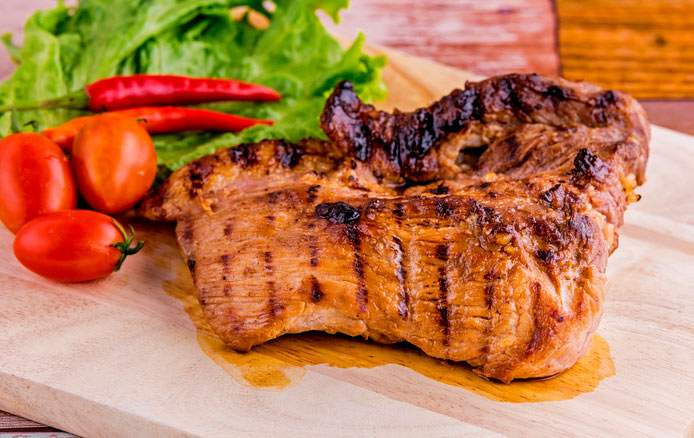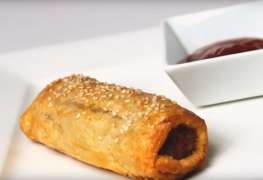 Often touted by foodies as "better than bacon," pork jowl is a highly fatty cut of meat that comes from the cheek of a pig. Similar in taste to bacon but slightly sweeter and exponentially more fatty, it's often used in its cured, smoked form in Roman all'Amatriciana recipes and can be used interchangeably in dishes that call for bacon. However, pork jowl can also be incredible when served as a fresh cut on its own — as long as you know how to cook it, that is.
Often touted by foodies as "better than bacon," pork jowl is a highly fatty cut of meat that comes from the cheek of a pig. Similar in taste to bacon but slightly sweeter and exponentially more fatty, it's often used in its cured, smoked form in Roman all'Amatriciana recipes and can be used interchangeably in dishes that call for bacon. However, pork jowl can also be incredible when served as a fresh cut on its own — as long as you know how to cook it, that is.
Because pigs don't use their cheeks for much strenuous activity, their jowls are known to be extremely tender and, when cooked, marbled with soft, silky fat. However, similar to pork belly, jowls often come attached to a rind of skin via connective tissues and layers of fat, and these can make it extremely tough and grisly if not cooked properly. For that reason, pork jowl is often prepared using a two-step method: It's first braised for softness before it's fried to crispy, golden perfection.
Hit jowls with the one-two punch of braising and frying
In order for the tough connective tissues in the pork cheek to soften and break down, a slow cooking method must be implemented. While this can be accomplished via smoking or stewing, few produce better results than braising. Using both dry and wet heat to achieve results, braising involves browning the cut in a skillet to release its flavors before slowly cooking it in liquid. This can be done using a Dutch oven or a slow cooker, depending on what you have available.
Once the collagen has transformed into soft gelatin and the meat is fork-tender, the pork jowl can be removed from the braising liquid (which can and should be used when making a sauce or soup) and sliced into strips. Now sufficiently softened, the strips of pork cheek can be browned for an elevated flavor and texture. While this can be done in the oven, pan-frying the strips gives you more control over the process. As the amino acids in the meat caramelize, they lend a flavorful hand to the rich taste and crispy, melt-in-your-mouth texture for which pork jowl is known.
Source: mashed.com








Leave a comment